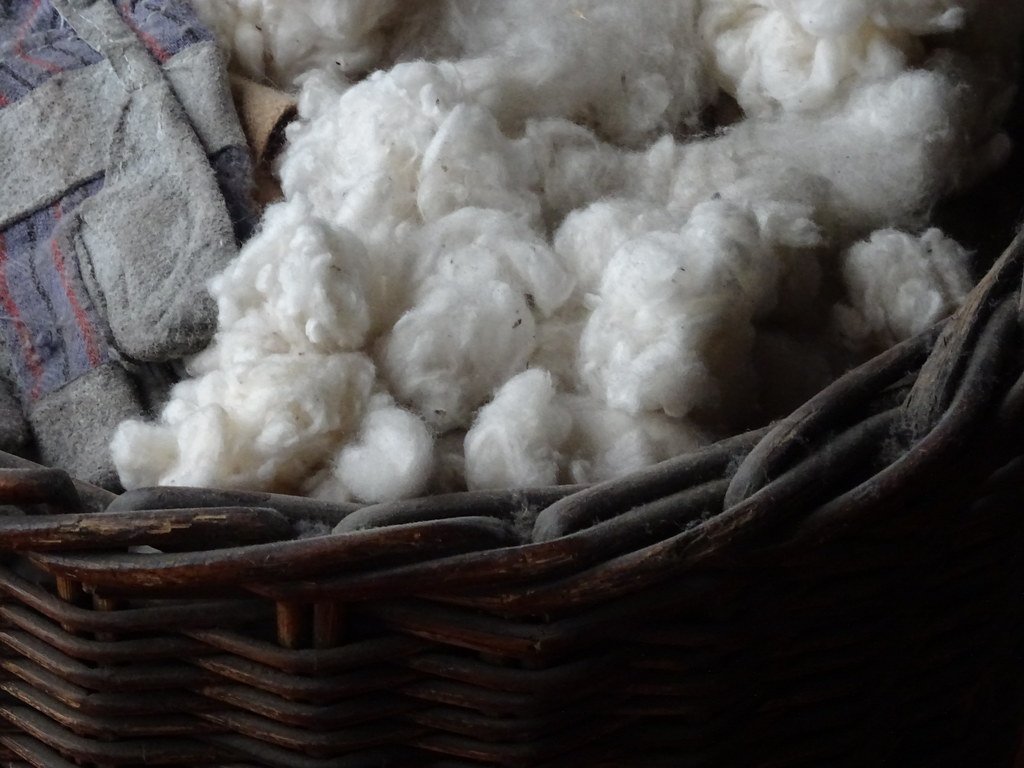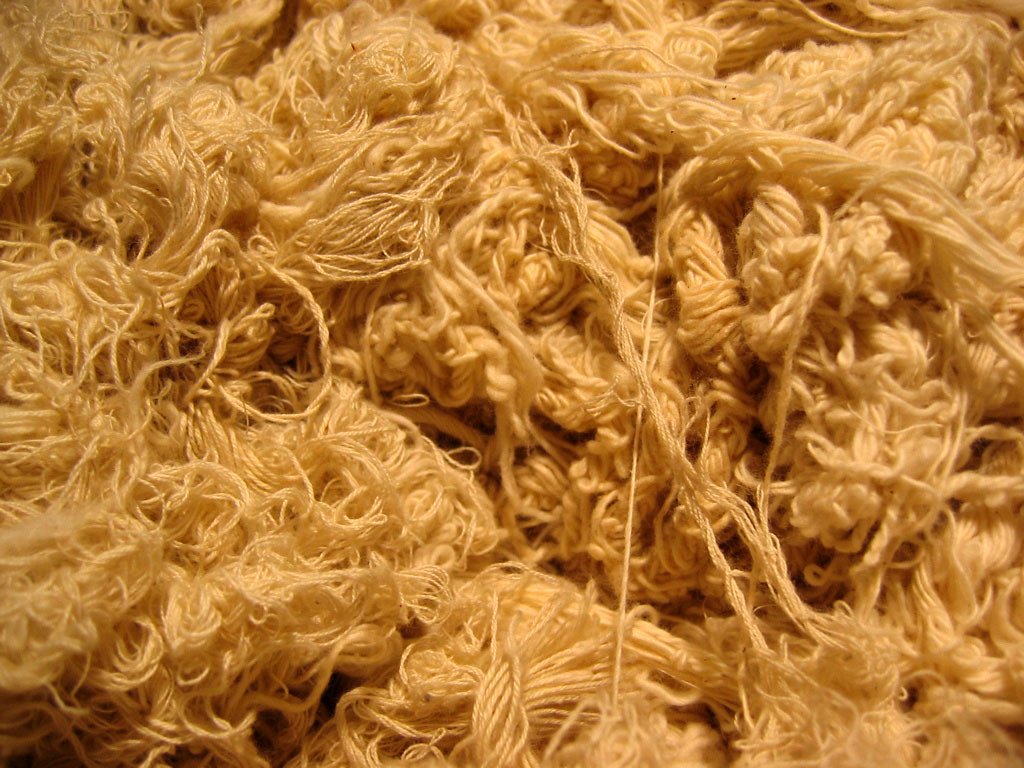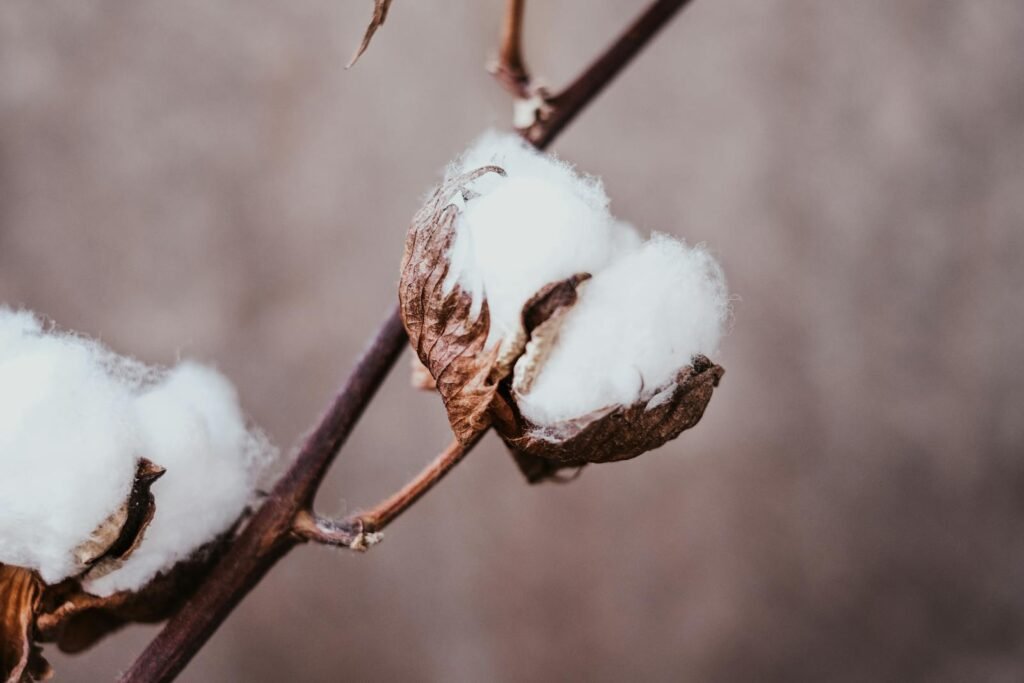Few plants have shaped human civilization quite like cotton. This seemingly innocent white fiber has orchestrated empires, fueled industrial revolutions, and tragically, provided the economic foundation for one of history’s most devastating conflicts. From ancient civilizations to modern fashion runways, cotton’s journey through time reveals a story far more complex than its soft, fluffy appearance suggests.
The Ancient Roots of Global Domination

Cotton’s story begins over 7,000 years ago in the Indus Valley, where ancient civilizations first discovered the remarkable properties of this plant’s seed fibers. Archaeological evidence from sites like Harappa and Mohenjo-daro reveals sophisticated cotton cultivation and textile production systems that would make modern farmers envious.
What made cotton so revolutionary wasn’t just its comfort – it was the plant’s remarkable adaptability. Unlike flax or wool, cotton could be grown in diverse climates and produced consistently high yields. Ancient traders quickly recognized its value, establishing trade routes that stretched from India to the Mediterranean.
The Sanskrit word “karpasa” eventually evolved into the Arabic “qutn,” then the Old French “coton,” showing how this plant literally wove itself into the vocabulary of civilizations. By 800 CE, cotton had become so valuable that Arab merchants called it “white gold.”
The Botanical Marvel Behind the Madness

Gossypium, cotton’s scientific name, encompasses roughly 50 species of flowering plants in the mallow family. The magic happens in the plant’s bolls – protective capsules that split open to reveal the coveted white fibers surrounding the seeds.
Each cotton fiber is essentially a single elongated cell, making it one of nature’s most efficient packaging systems. These unicellular structures can stretch up to 3,000 times their original width, creating the strength and flexibility that made cotton so desirable for textiles.
The plant’s reproductive strategy is equally fascinating. Cotton flowers are hermaphroditic, containing both male and female parts, yet they often cross-pollinate thanks to insects attracted to their nectar. This genetic mixing created the diversity that allowed cotton to spread across continents and adapt to various growing conditions.
From Sacred Fiber to Colonial Commodity

When European explorers first encountered cotton in the Americas, they discovered varieties that were distinctly different from their Asian counterparts. Native American civilizations had independently domesticated cotton around 3,500 BCE, developing unique species like Gossypium hirsutum and Gossypium barbadense.
The Spanish conquistadors initially viewed cotton as a curiosity, but they quickly realized its potential for exploitation. Unlike gold or silver, cotton could be continuously harvested, making it a renewable source of wealth that would sustain colonial economies for centuries.
Colonial plantations transformed cotton from a local crop into a global commodity. The warm, humid climate of the Caribbean and southern North America proved ideal for large-scale cultivation, setting the stage for the economic system that would eventually tear a nation apart.
The Cotton Gin: Innovation with Devastating Consequences

Eli Whitney’s cotton gin, invented in 1793, seemed like a miracle of human ingenuity. This simple machine could separate cotton fibers from their seeds 50 times faster than manual labor, revolutionizing the entire industry overnight.
However, the gin’s efficiency created an unexpected problem. Instead of reducing the need for enslaved labor, it dramatically increased demand for cotton production. What had once been a marginally profitable crop suddenly became incredibly lucrative, driving plantation owners to expand their operations exponentially.
The numbers tell a stark story: cotton production jumped from 750,000 pounds in 1830 to 2.85 billion pounds by 1860. This astronomical growth came at an unimaginable human cost, as the enslaved population in cotton-growing states increased from 700,000 to nearly 4 million during the same period.
King Cotton’s Economic Empire

By the 1850s, cotton had become the United States’ most valuable export, earning it the nickname “King Cotton.” The crop generated more revenue than all other American exports combined, creating enormous wealth for plantation owners and Northern textile manufacturers alike.
This economic dominance extended far beyond American borders. British textile mills depended heavily on American cotton, making the fiber a crucial component of international trade relationships. The phrase “cotton is king” wasn’t just Southern propaganda – it reflected a genuine economic reality.
The wealth generated by cotton funded not just individual fortunes but entire regional economies. Cities like New Orleans, Mobile, and Charleston became major commercial centers, their prosperity built entirely on the backs of enslaved people working in cotton fields.
The Moral Contradiction at Cotton’s Core

Cotton’s success created a profound moral crisis for a nation founded on principles of freedom and equality. The same crop that clothed the world and funded American prosperity was inextricably linked to the brutal exploitation of human beings.
Enslaved people developed sophisticated knowledge about cotton cultivation, often knowing more about the plant’s needs than their owners. They created innovative farming techniques, developed new varieties through selective breeding, and maintained the agricultural systems that generated enormous wealth for others.
The contradiction became increasingly difficult to ignore as abolitionist movements gained momentum. How could a nation built on liberty continue to profit from a system that denied basic human rights to millions of people? Cotton had become both America’s greatest economic asset and its deepest moral wound.
Political Tensions and the Road to War

As cotton production expanded westward, the question of slavery’s extension into new territories became a national obsession. The Missouri Compromise, the Compromise of 1850, and the Kansas-Nebraska Act all attempted to balance the competing interests of cotton-growing states and free states.
Southern politicians argued that cotton was essential to the American economy and that any restrictions on slavery would destroy the nation’s prosperity. They weren’t entirely wrong – cotton exports provided the foreign currency that allowed America to import manufactured goods and invest in infrastructure.
The political power of “King Cotton” extended into Congress, where the three-fifths compromise gave Southern states additional representation based on their enslaved populations. This meant that cotton indirectly influenced American politics, giving slaveholding states disproportionate power in federal decision-making.
The Civil War: When Cotton’s Kingdom Crumbled

When the Civil War erupted in 1861, Confederate leaders believed that cotton would secure their victory. They implemented a “cotton diplomacy” strategy, expecting that European dependence on Southern cotton would force international recognition and support.
The strategy initially showed promise. British textile mills faced severe shortages, unemployment soared in manufacturing cities like Manchester, and there was genuine pressure on the British government to intervene. However, the Confederacy had overestimated cotton’s diplomatic power.
Union naval blockades strangled cotton exports, while alternative sources in Egypt and India began filling the global supply gap. By 1863, it became clear that cotton alone couldn’t win a war, and the South’s economic foundation began to collapse along with its military fortunes.
Environmental Destruction in Cotton’s Wake

Cotton’s intensive cultivation practices left lasting scars on the American landscape. The crop depletes soil nutrients rapidly, requiring constant fertilization and leading to widespread erosion when planted repeatedly in the same fields.
Plantation agriculture focused on short-term profits rather than sustainable farming practices. Millions of acres of diverse ecosystems were converted to cotton monocultures, destroying habitats and reducing biodiversity across the South.
The environmental damage extended beyond soil depletion. Cotton requires enormous amounts of water, and irrigation systems in the post-war period would eventually contribute to problems like the depletion of the Ogallala Aquifer and the ecological disaster of the Aral Sea in Central Asia.
Reconstruction and Cotton’s Continued Grip

The end of slavery didn’t end cotton’s dominance in the South. The sharecropping system that emerged during Reconstruction kept many formerly enslaved people tied to cotton production, often under conditions that were economically similar to slavery.
Landowners provided tools, seeds, and basic necessities to sharecroppers in exchange for a portion of the harvest. This system perpetuated poverty and dependence, ensuring that cotton continued to extract wealth from Black laborers even after emancipation.
The crop’s grip on the Southern economy remained so strong that it hindered diversification efforts for decades. Communities that had built their entire identity around cotton production struggled to adapt to changing economic realities.
The Boll Weevil: Nature’s Intervention

In 1892, a small beetle crossed the Rio Grande from Mexico and began what would become known as the “boll weevil invasion.” This tiny insect, no bigger than a pencil eraser, would accomplish what decades of economic and political pressure couldn’t – it broke cotton’s stranglehold on the South.
The boll weevil’s larvae feed on cotton bolls, destroying crops and making large-scale monoculture farming economically unsustainable. By 1922, the pest had spread throughout the cotton-growing regions, causing an estimated $200 million in annual crop losses.
Paradoxically, the boll weevil’s destruction forced agricultural diversification that many communities had resisted for generations. The town of Enterprise, Alabama, even erected a monument to the boll weevil, crediting it with forcing the economic changes that ultimately brought greater prosperity.
Modern Cotton: Technology and Transformation

Today’s cotton industry bears little resemblance to the plantation system that once dominated the South. Modern cotton farming employs GPS-guided tractors, sophisticated irrigation systems, and genetically modified varieties designed to resist pests and herbicides.
Mechanical cotton pickers, first introduced in the 1940s, eliminated the need for the massive seasonal labor forces that had characterized cotton production for centuries. A single modern harvester can do the work of dozens of hand pickers, fundamentally changing the crop’s labor requirements.
Biotechnology has created cotton varieties that produce their own pesticides through genetic modifications, reducing chemical applications while increasing yields. These innovations have made cotton production more efficient and environmentally friendly, though they’ve also raised new questions about corporate control over agriculture.
Global Cotton: A Worldwide Web

Cotton production has become truly global, with China, India, and the United States leading world production. However, the crop’s expansion has created new ethical and environmental challenges in regions where labor protections and environmental regulations may be less stringent.
The Aral Sea disaster in Central Asia demonstrates cotton’s continued environmental impact. Soviet-era irrigation projects diverted rivers to support massive cotton cultivation, causing one of the world’s largest lakes to shrink by 90% and creating an ecological catastrophe.
In modern India, cotton farming has been linked to alarming rates of farmer suicide, as smallholder farmers struggle with debt loads from expensive seeds and chemicals. The crop that once enslaved people in America continues to trap farmers in cycles of poverty and desperation around the world.
The Hidden Costs of Fast Fashion

Modern cotton consumption has exploded with the rise of fast fashion, creating demand for cheap, disposable clothing that puts enormous pressure on both workers and the environment. The average American now purchases 68 garments per year, most containing cotton.
This consumption pattern has revived some of the exploitative labor practices that characterized cotton’s historical production. Garment workers in countries like Bangladesh and Vietnam often work in conditions that would be familiar to 19th-century mill workers, earning wages that barely cover basic survival needs.
The environmental impact of modern cotton production includes massive water consumption, pesticide use, and chemical processing that pollutes waterways. It takes approximately 2,700 liters of water to produce a single cotton t-shirt, highlighting the resource intensity of our clothing choices.
Organic and Sustainable Cotton: Hope for the Future

Growing awareness of cotton’s environmental and social impacts has sparked movements toward more sustainable production methods. Organic cotton farming eliminates synthetic pesticides and fertilizers, while fair trade certification ensures better working conditions for farmers.
Innovations in cotton processing are reducing the industry’s environmental footprint. Closed-loop systems recycle water and chemicals, while new dyeing techniques use less water and energy than traditional methods.
Consumer awareness campaigns encourage people to buy less but choose better quality cotton products. The “slow fashion” movement promotes clothing that lasts longer and is produced under ethical conditions, challenging the disposable culture that has dominated recent decades.
Cotton’s Genetic Future

Scientific advances are creating new possibilities for cotton production that could address many of the crop’s historical problems. Researchers are developing varieties that require less water, resist pests naturally, and produce fibers with enhanced properties.
Gene editing technologies like CRISPR offer the potential to create cotton varieties that can thrive in changing climate conditions while reducing the need for chemical inputs. These innovations could make cotton production more sustainable and less dependent on exploitative labor practices.
However, these technologies also raise questions about corporate control over agriculture and the potential for creating new forms of dependence among farmers. The history of cotton suggests that technological solutions must be accompanied by social and economic reforms to avoid repeating past mistakes.
Remembering Cotton’s Complex Legacy

Understanding cotton’s history requires confronting uncomfortable truths about how prosperity has been built on exploitation and environmental destruction. The plant that clothes the world carries the weight of slavery, war, and ecological damage that continues to affect communities today.
Museums and historical sites across the South are beginning to tell more complete stories about cotton’s legacy, including the experiences of enslaved people whose knowledge and labor made the crop so profitable. These efforts help visitors understand the true cost of the comfortable, affordable clothing we often take for granted.
Educational initiatives in schools and communities are working to ensure that future generations understand both cotton’s economic importance and its human cost. This knowledge is essential for making informed decisions about consumption and supporting more ethical production practices.
The Threads That Bind Us

Cotton’s legacy reminds us that seemingly simple consumer choices connect us to complex global systems with profound social and environmental implications. Every cotton garment we wear carries threads that link us to farmers, workers, and ecosystems around the world.
The plant that sparked a war continues to shape our world today, though in forms that would be unrecognizable to antebellum plantation owners. From the t-shirt in your closet to the sheets on your bed, cotton remains intimately woven into daily life, carrying with it the weight of history and the promise of a more sustainable future.
Perhaps most importantly, cotton’s story teaches us that plants are never just plants – they are catalysts for human ambition, innovation, and often, exploitation. As we face modern challenges like climate change and labor rights, cotton’s complicated legacy offers both cautionary tales and hope for transformation. What lessons will future generations learn from how we choose to grow, process, and consume this remarkable plant?


